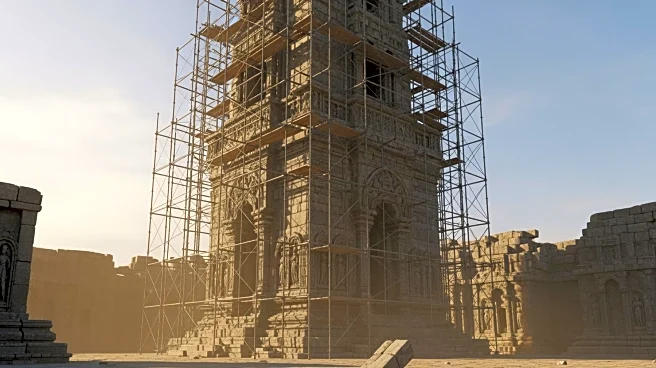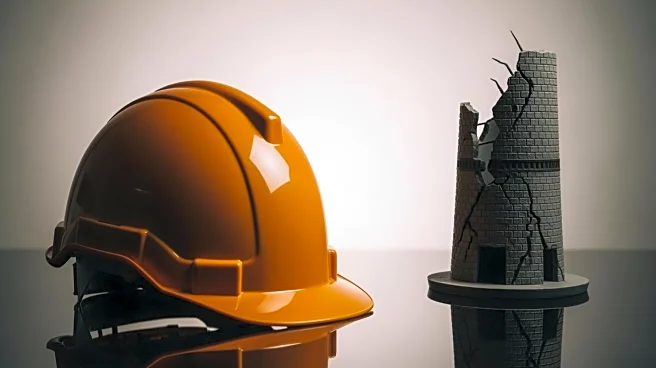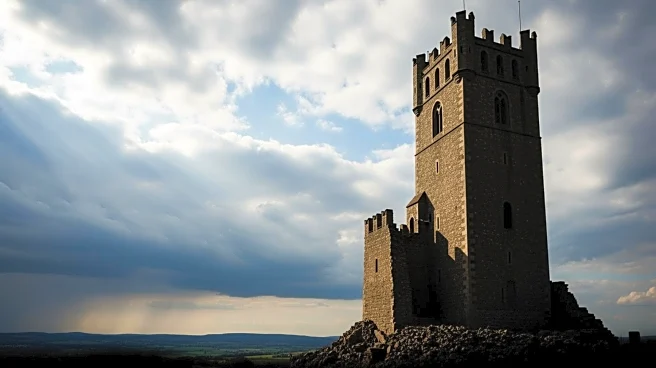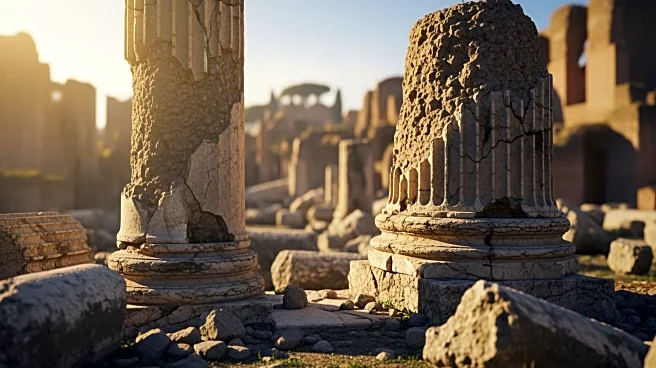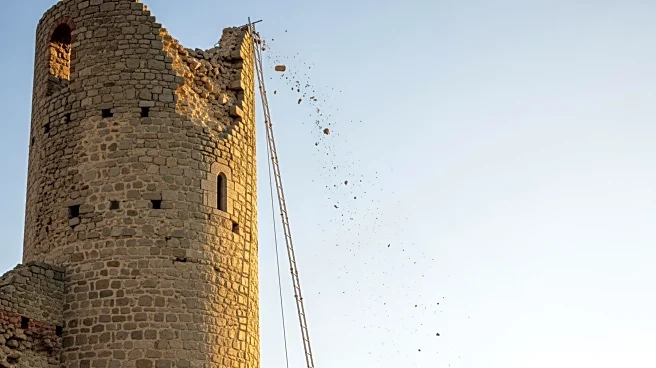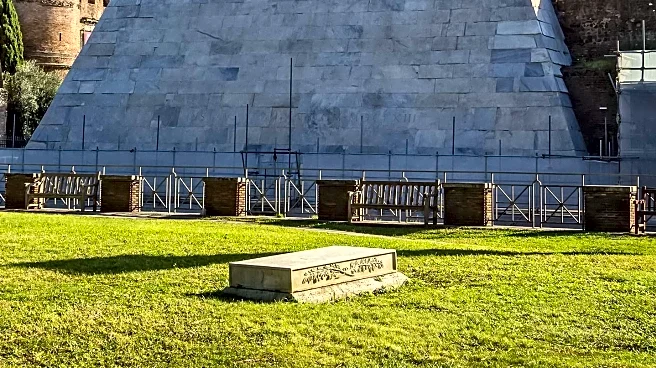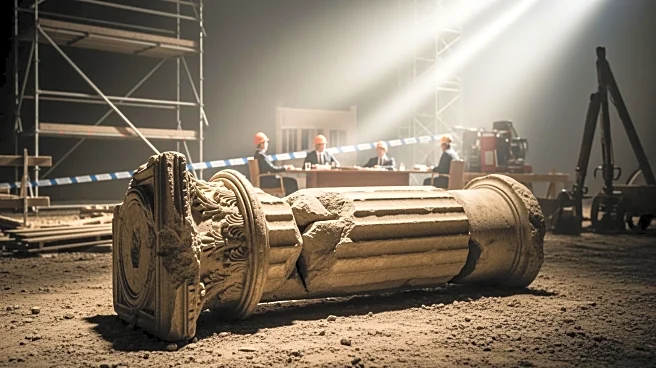What's Happening?
A medieval tower in Rome, the Torre dei Conti, partially collapsed during renovation work, resulting in the death of a worker. The tower, located near the Colosseum, was undergoing a $7.9 million renovation funded
by the European Union. The collapse trapped a Romanian worker, Octav Stroici, who later died in the hospital. Another worker was injured. The tower, built in the early 13th century, had been closed to the public since 2007. Italian authorities are investigating the cause of the collapse, with initial reports suggesting an internal structural failure.
Why It's Important?
The collapse of the Torre dei Conti raises concerns about the preservation and safety of historical structures undergoing renovation. This incident highlights the challenges faced in maintaining ancient architecture, which is crucial for cultural heritage and tourism. The tragedy underscores the need for stringent safety protocols and thorough structural assessments in restoration projects. The investigation's findings could influence future policies and practices in the conservation of historical sites, impacting stakeholders involved in heritage preservation and urban development.
What's Next?
Italian authorities have launched an investigation to determine the cause of the collapse. The outcome could lead to changes in regulations governing the restoration of historical buildings. The incident may prompt a review of current safety standards and renovation practices, potentially affecting future projects across Italy and the European Union. Stakeholders, including cultural heritage organizations and construction firms, will be closely monitoring the investigation's progress and its implications for the industry.
